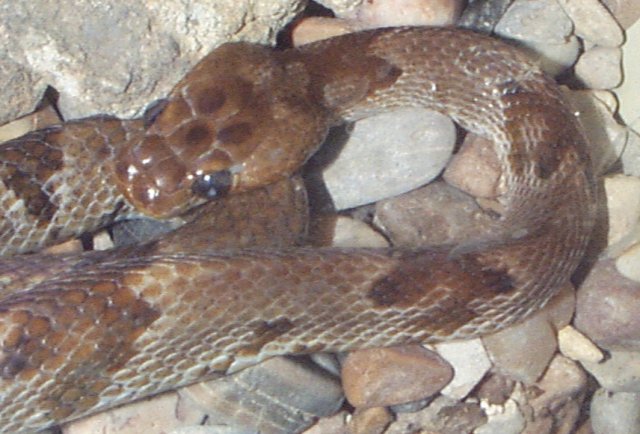
The Texas Lyre Snake is about 24-48 inches in length. It is a tan and greyish color, and it has a v-shape on its head. Its upper jaw has a pair of sharp teeth. The snake is only mildly venomous.
The Lyre snake belongs to the family (Colubridae) which is a large family that most non-venomous and mildly venomous snakes belong to. This snake is solitary because it likes to travel alone. It also likes to explore beyond its shelter place.
The Texas Lyre Snake lives mostly in rock crevice desert dwelling places. It especially lives in jumbles of fallen boulders or along fissure bluffs.
This animal is not currently on exhibit.
The Lyre Snake does lay eggs after a 77 day incubation period The eggs that it lays are very slender and about 1 - 1 1/2 inch long. In the summer time it lays about 20 eggs.
Tennan, Allen. A Field Guide to Texas Snakes.Texas: Monthly Press Inc, 1985.
http://www.desertmuseum.org/books/lyre snake.html
http://www.herpo.com/trans-pecos/snakes/trimorph.html
http://www.yahooligans.com/content/animals/species/4440.html
Anna Rebekah Saucedo arstweety@hotmail.com